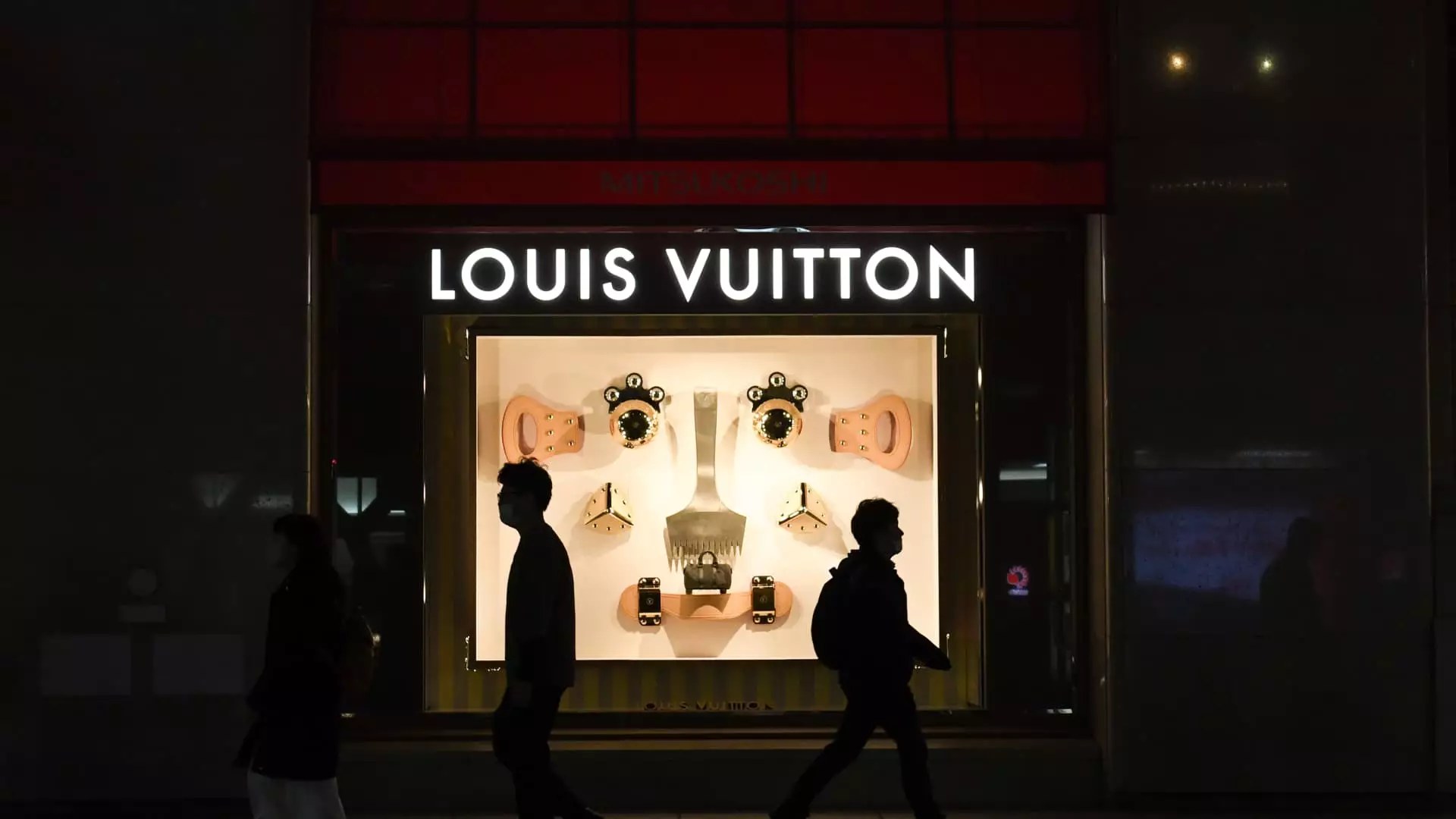In a startling turn of events for the luxury market, LVMH Moët Hennessy Louis Vuitton, once the undisputed monarch of high-end fashion, witnessed its shares plummet by as much as 8% on a Tuesday morning that felt more like a financial nightmare than a regular trading day. The reasons for this catastrophic drop? A disheartening 3% year-on-year decline in first-quarter sales, unveiling cracks in an empire that was once seen as impervious to market fluctuations. This decline not only threatens LVMH’s stature as the world’s largest luxury firm but also raises alarm bells for the entire luxury sector, which finds itself tethered to the health of a now faltering giant.
Challenging Market Dynamics
The figures are eye-popping: Hermès, the fierce rival known primarily for its iconic Birkin bags, briefly overtook LVMH in market capitalization. How have we reached a point where the brand synonymous with luxury is now at risk of being eclipsed by its competitors? Analysts from Citi did not mince words in their assessment, suggesting that results from LVMH were dismal enough that “there was not much to cheer for” at this luxury bellwether. In a time when other sectors may be thriving, the uncertainty gripping the luxury industry feels almost unprecedented.
While economic landscapes can shift overnight, the luxury sector is now faced with multiple headwinds. With a 9% decline in wines and spirits—a sector that ought to be lush and profitable—the question that lingers is why? Geopolitical tensions, particularly between the U.S. and China, are sending shockwaves through consumer confidence, resulting in reduced demand for goods that once flew off the shelves. The sad situation is that this is not merely an LVMH problem; this decline has incited a domino effect that has also adversely impacted other luxury players like Kering and Burberry, which saw their share values dip significantly.
Geopolitical Tensions and Consumer Behavior
What’s even more alarming is that the luxury market is heavily reliant on global supply chains, which makes it particularly vulnerable to external shocks. The recent tariffs introduced by U.S. trade policy under President Trump have exacerbated the situation, leaving firms like LVMH scrambling to assess the direct impact on consumer spending. With increased input costs looming overhead, the potential for a full-blown economic downturn is not just hypothetical; it’s a looming reality that could further erode consumer willingness to spend on luxury items.
Additionally, as LVMH’s CFO Cecile Cabanis stated in a fraught analyst call, aspirational clientele—those who may not be financially secure but are keen on luxury—tend to retract their spending during economic downturns. This is particularly detrimental to luxury brands that thrive on an image of exclusivity, authenticity, and affluence. When the rich pull back on spending, the ripple effect through the sector can be devastating.
A Call to Reassess Strategy
It would be a grave mistake to brush this situation under the carpet as a small hiccup on the luxury landscape; instead, these figures highlight a critical need for LVMH to reassess its market strategy. The branding powerhouse cannot afford to be complacent. The company must consider innovative approaches to capture a wiser, more financially cautious consumer. The expectation that affluent consumers can bear increased prices without blinking may not hold, especially in regions like the U.S. and China, where economic clouds are darkening.
Not only is the sector facing external pressures from shifting trade policies, but a cultural and generational shift in consumer behavior is also at play, one that demands brands to reconsider their relationships with consumers. The wealth distribution is changing, and so are the values. Luxury must adapt. Companies like LVMH need to shed their lavish excess if they wish to resonate with a younger demographic who value experience over opulence.
In this moment of uncertainty, it is vital for brands to pivot rather than panic. The luxury sector can no longer assume safety within its silos; it must embrace transparency, sustainability, and consumer-focused engagement. As much as we wish to romanticize the allure of luxury, the world is watching—and questioning—what it truly means to flaunt wealth in a rapidly changing global landscape.

